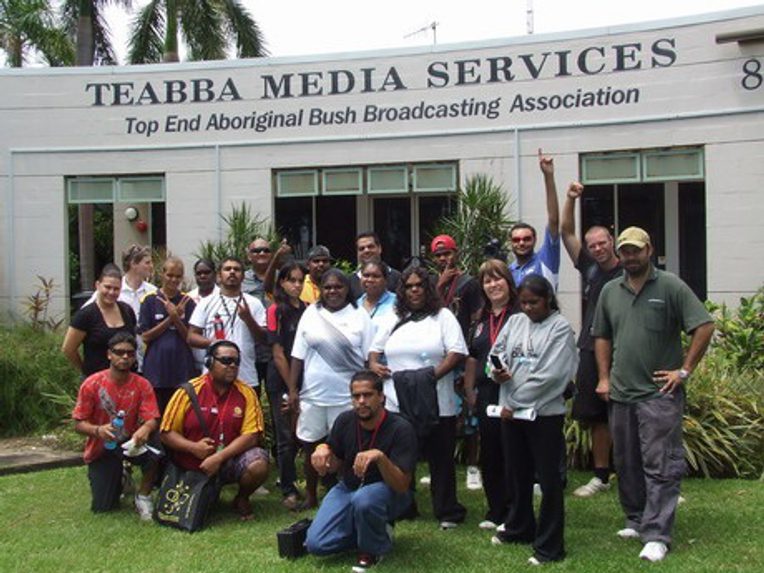This post builds on the research article “Mediating Kinship: Country, Family, and Radio in Northern Australia,” which was published in the May 2009 issue of the Society’s peer-reviewed journal, Cultural Anthropology.

Editorial Overview
In the May 2009 issue of Cultural Anthropology, Daniel Fisher discusses the performative, mediated interweaving of speech, song, and kinship on Aboriginal radio broadcasts in Northern Australia. Fisher focuses specifically on increasingly popular request programs, which have emerged from the activist drives of Indigenous media producers, and invariably involve “shout outs” by callers to close and extended kin. Often developed as a means for connecting prison inmates to their families and communities, Fisher describes these programs as the intersection between a history of Aboriginal incarceration, the dispersal of kin networks, and the expressive idiom of radio requests.
Fisher grounds his analysis in his active work alongside DJs with the Top End Aboriginal Bush Broadcasting Association (TEABBA), originally established as a means to support Indigenous people in the use of broadcasting media. Kinship reference provides Aboriginal Australians with a powerful meta-language through which to reproduce relationships, Fisher argues, while maintaining distinction from a broader Australian society. In this way, Fisher conceptualizes the “co-mobilization” of broadcast media and kinship, in which kinship occupies and preoccupies Aboriginal radio broadcasts, “linking up” spatially and institutionally dispersed kin. “The mediatization of kinship's mediation,” Fisher argues, “enables its contemporary, recursive value as an icon of Aboriginal distinction.”
Editorial Footnotes
Cultural Anthropology has published essays which discuss aboriginal Australia and new media. Some examples are, Kimberly Christen's “Tracking Properness: Repackaging Culture in a Remote Australian Town” (2006); Faye Ginsburg's “Embedded Aesthetics: Creating a Discursive Space for Indigenous Media” (1994); and Faye Ginsburg's “Indigenous Media: Faustian Contract or Global Village?” (1991).
Cultural Anthropology has also published a number of other essays on emergent public spheres. These include, Brian Silverstein's “Disciplines of Presence in Modern Turkey: Discourse, Companionship, and the Mass Mediation of Islamic Practice” (2008); Christopher Kelty's “Geeks, Social Imaginaries, and Recursive Publics” (2005); and Lorna Rhodes' “Changing the Subject: Conversation in Supermax” (2005).
Recent Publications and Films by the Author
2004. “Local sounds, popular technologies: History and historicity in Andean radio.” In Jim Drobnick, ed. Aural Cultures. pp. 207-218. Montreal and Banff: Walter Phillips Gallery/YYZ Books.
2001. A Cat In a Sack: The Hungry March Band. Documentary Video on the Brooklyn New York Marching Band. Produced under the auspices of NYU’s program in Culture and Media, 2001.
Related Readings
Christen, Kimberly. "Tracking Properness: Repackaging Culture in a Remote Australian Town." Cultural Anthropology 21.3(2006): 416-446.
Ginsburg, Faye. "Embedded Aesthetics: Creating a Discursive Space for Indigenous Media." Cultural Anthropology 9.3(1994): 365-382.
Ginsburg, Faye. "Indigenous Media: Faustian Contract or Global Village?." Cultural Anthropology 6.1(1991): 92-112.
Kelty, Christopher. "Geeks, Social Imaginaries, and Recursive Publics." Cultural Anthropology 20.2(2005): 185-214.
Rhodes, Lorna. "Changing the Subject: Conversation in Supermax." Cultural Anthropology 20.3(2005): 388-411.
Silverstein, Brian. "Disciplines of Presence in Modern Turkey: Discourse, Companionship, and the Mass Mediation of Islamic Practice." Cultural Anthropology 23.1(2008): 118-153.